The foreclosure process in Minnesota can be complicated and intimidating, but understanding the steps involved is key to navigating the situation. The first step is usually when a lender sends a Notice of Default to the homeowner informing them that they are delinquent on their mortgage payments.
After this notice, the homeowner has a set amount of time to bring their loan current or make alternative arrangements with the lender. If this doesn't happen, then a Notice of Foreclosure Sale is sent out, which informs homeowners that their home will be put up for auction.
This notice also includes details about how much money is owed and how long the homeowner has before they must vacate the property. Once the sale takes place, it's possible that the lender may decide to acquire ownership of the property and begin eviction proceedings if necessary.
It's important to understand how this timeline works so you can properly prepare yourself if you ever find yourself facing foreclosure in Minnesota.
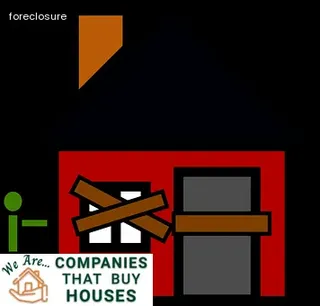
Minnesota homeowners have several rights under the law when it comes to foreclosure. Firstly, they are entitled to receive a notice of foreclosure from their lender at least six weeks before any court hearing.
This gives them time to respond and make arrangements with the bank or mortgage servicer. In addition, they can request mediation if they are unable to reach an agreement on how to clear the debt.
The state also requires lenders to provide a statement of account that details all payments made and the current balance owed, so homeowners can see exactly where their money is going. Finally, Minnesota law states that lenders must provide homeowners with access to free legal advice if they are facing foreclosure proceedings.
By understanding these rights, Minnesota homeowners can take steps to protect themselves and potentially avoid foreclosure altogether.
The Homeowner Bill of Rights is an important piece of legislation that outlines the rights and protections available to homeowners in the event of a foreclosure. It was designed to ensure fair treatment for homeowners who are facing foreclosure proceedings, and to provide support during this difficult time.
The Homeowner Bill of Rights contains specific protections regarding the rights of borrowers, lenders, servicers, and other parties involved in the foreclosure process. In particular, it provides for certain notice requirements for lenders before initiating a foreclosure proceeding.
It also prohibits certain unfair practices such as dual tracking (whereby lenders pursue both a loan modification and a foreclosure) and ensures that borrowers have access to information concerning their loan status. Additionally, the Homeowner Bill of Rights requires lenders to use good faith efforts when negotiating with homeowners in the event of a mortgage default or delinquency.
This includes offering reasonable terms for loan modifications whenever possible as well as providing accurate information about all options available to homeowners in default or delinquency situations. All these provisions are intended to ensure that Minnesota homeowners receive fair treatment throughout the foreclosure process.

When faced with foreclosure, Minnesotans should be aware of potential scams that can further complicate their financial situation. It is important to know the timeline of events in order to understand the Minnesota foreclosure process and avoid falling prey to a scam.
Homeowners in default should never pay money upfront for any services related to resolving their foreclosure issues. If someone requests payment before providing any services, this is a strong indication that they may be attempting to scam you.
Additionally, homeowners should be wary of companies that guarantee they can stop your foreclosure immediately or promise results that sound too good to be true. It is also important to research companies online and investigate any complaints about them before agreeing to work with them.
Finally, it’s always best to get advice from an attorney or housing counselor who understands the Minnesota foreclosure laws and regulations when making decisions about how best to handle your foreclosure situation.
In Minnesota, the most common foreclosure process begins with a Notice of Default being sent to the borrower in default. This document is issued by the mortgage holder and notifies the borrower that they are in default on their loan.
After receiving this notice, the borrower has several options to correct the default. If they do not take action within a certain time period, a Notice of Sale is issued and published in a local newspaper.
This document provides information regarding when and where foreclosure proceedings will take place. Following this notice, a Trustee's Sale is conducted where interested buyers may bid on the property.
The highest bidder then becomes the new owner of the property after payment has been made in full. In some cases, however, the mortgage holder may decide to cancel or postpone the sale if they believe that it is not in their best interest.
In any case, it is important for borrowers to understand their options and rights throughout each step of this process in order to protect themselves from financial hardship or other serious consequences associated with foreclosure.
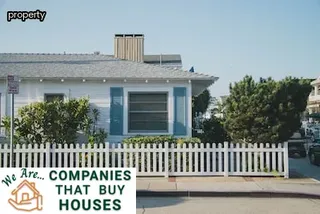
The preforeclosure process in Minnesota begins with the lender sending a Notice of Default to the homeowner. This document outlines the amount of money owed and provides the homeowner with a timeline to cure the default by bringing their mortgage current.
If this payment is not made within a reasonable timeframe, the lender can initiate foreclosure proceedings. The lender must then file a Notice of Foreclosure Sale with the County Recorder's Office and serve it on the homeowner.
The notice must also be published in a local newspaper as required by law. Afterward, homeowners have two options: they can either pay off the loan or contest it through an administrative hearing or lawsuit.
In either case, if the loan is not paid off, then Minnesota law requires that a period of redemption exist during which time the homeowner has up to 6 months from the date of sale to pay off all amounts due plus costs and interest to reclaim their home before title passes outright to a new owner.
In Minnesota, preforeclosure notices are sent to debtors when a homeowner has missed payments on their mortgage for at least three months. These notices allow homeowners and lenders to come to an agreement before the foreclosure process begins.
The timeline of this notice is generally 30 days, in which a borrower must pay off the delinquent amount or enter into financial mediation. If there is no agreement after 30 days, a Notice of Mortgage Foreclosure Sale is issued and the property will be sold off at public auction.
At this point, the homeowner can no longer make up the delinquent payments and the home will go through foreclosure unless someone purchases it at auction. It is important for Minnesotans to understand their state's foreclosure process so they can work toward preventing it if they find themselves in a difficult financial situation.

In Minnesota, the foreclosure process begins when a homeowner misses a payment. When this happens, the mortgage servicer will send out a notice of default to the homeowner, notifying them that they have missed a payment and are in violation of their loan agreement.
The mortgage servicer will then proceed with formal foreclosure proceedings and begin the process of taking back ownership of the property. During this time, homeowners will have up to five months to respond to any notices sent by the mortgage servicer or lender.
If no action is taken within this period, then foreclosure proceedings may commence and the home may be sold at a public auction. This timeline can vary depending on the terms of the loan agreement and other factors such as whether there are any legal challenges to the foreclosure proceeding.
Ultimately, it is important for homeowners to understand what their rights are during this difficult time so that they can take appropriate measures to protect themselves from foreclosure.
Stopping a foreclosure in Minnesota requires understanding the timeline of events that leads up to it. Before proceeding with any action, homeowners should understand their rights as outlined in Minnesota law.
Foreclosure is a legal process and all parties must follow the specific regulations and guidelines laid out by state law. To avoid foreclosure, homeowners may consider reaching out to a housing counselor for assistance.
A housing counselor can provide resources and advice on how to create an affordable payment plan or renegotiate the loan terms with the lender. In some cases, filing for bankruptcy and negotiation of loan terms may be a viable option for stopping a foreclosure.
Other potential solutions include refinancing the loan, taking out a home equity loan or an additional mortgage, or selling the property prior to foreclosure. Ultimately, there are many ways to stop a foreclosure in Minnesota if homeowners take action early and explore all possible options.

In order to reinstate the mortgage prior to sale, Minnesota homeowners must take certain steps. First and foremost, they must contact their lender or loan servicer as soon as possible.
If a homeowner cannot pay the entire delinquent amount, they should inquire about potential repayment plans. Depending on the lender’s policies, this may include a repayment plan with reduced payments over a period of time or a single lump sum payment.
If a repayment plan is offered by the lender, it is important for the homeowner to review all terms and conditions, including any additional fees or interest that may be added to the debt. Once agreed upon, it is essential for homeowners to make all payments on time and in full according to the payment plan.
Homeowners can also contact local housing counseling organizations for assistance in understanding their options and negotiating with their lenders if needed. It is important for homeowners facing foreclosure in Minnesota to understand their rights and options so they can make informed decisions about their financial future.
When it comes to the foreclosure process in Minnesota, understanding the redemption period after a sale is key. This period allows the borrower to reclaim their home by paying off the balance of their mortgage debt, along with all associated costs and penalties.
It typically begins at the time of the foreclosure sale and can last anywhere from six months to one year. During this time, there are several important steps that borrowers must take in order to proceed with redemption and maintain their rights.
First, they must obtain a Certificate of Redemption from either the court or lender that issued the foreclosure notice, and they must also provide proof of payment for all costs associated with the redemption process. Additionally, borrowers should be aware that any payments made during this period should be made directly to the lender rather than to any third-party.
Finally, if a borrower chooses not to redeem their home, they must inform both the court and lender prior to expiration of the redemption period.

When a home goes through foreclosure, it is important to understand the timeline and process of events that will occur. Once the foreclosure sale has taken place and the home is sold, the homeowner must vacate the premises.
To ensure that this process happens in an orderly fashion, Minnesota requires certain steps be taken. The new owner of the foreclosed home must file a summons and complaint with the court for eviction proceedings.
This document must be personally served on the homeowner or posted at their residence. If no response is received, after seven days from service or posting, a default judgement can be entered.
From there, a writ of recovery can be issued to evict the homeowner if they have not vacated by then. It is important to note that while a judgment may be entered on behalf of the new owner, they are still legally required to follow all state laws regarding eviction procedures and cannot simply force someone out of their home without going through proper channels.
When facing foreclosure, it is important to understand that your lender may be willing to work with you. It is possible to avoid foreclosure by communicating with your lender and coming up with a plan that works for both of you.
To start, contact your lender as soon as possible and explain the financial hardship you are facing. Be prepared to provide documents such as income statements and bank account information that shows how much money you have available to make payments.
Your lender may then suggest a repayment plan or offer a loan modification that could help you catch up on missed payments or reduce the amount due each month. Additionally, if there are any extenuating circumstances, such as medical bills or job loss, be sure to share this information so they can take it into consideration when offering solutions.
Lastly, always read all documents carefully before signing and seek legal advice if needed to ensure all options have been explored before agreeing to a solution.

Understanding state foreclosure laws is essential to comprehending Minnesota's foreclosure process. A timeline of events can help explain the process more clearly.
First, a homeowner in default on their mortgage must receive a notice of intent to foreclose. This serves as an official warning and allows the homeowner an opportunity to try and avoid foreclosure through various options or remedies such as loan modification, repayment plan, or deed in lieu of foreclosure.
If these attempts fail, the lender can then file for a judicial foreclosure which requires a court action. The court will issue a judgment of foreclosure and appoint a referee who will oversee the sale of the property at public auction.
Afterwards, the highest bidder must pay any outstanding debts associated with the property and receive confirmation from the court before taking possession. Throughout this timeline it is important for homeowners to be aware of their rights and obligations when facing what can be an intimidating process – including understanding Minnesota's foreclosure laws.
In Minnesota, the foreclosure timeline typically takes three to four months to complete. The process begins when a homeowner falls behind on payments and the lender notifies them of their delinquency.
The lender will then file for foreclosure with the county court, which can take up to two weeks. This is followed by a notice of sale being published in a local newspaper for at least six weeks and mailed to all parties involved.
During this time, the homeowner may be able to work out an arrangement with their lender or may be able to find another solution such as a loan modification or short sale before the home goes into foreclosure. If none of these options are available, the property is then auctioned off by the county sheriff's office.
The winning bidder at the auction must pay in cash within 24 hours after the auction closes and becomes responsible for any remaining debt owed on the property. After payment is made, ownership of the property will transfer immediately, concluding Minnesota's foreclosure process.
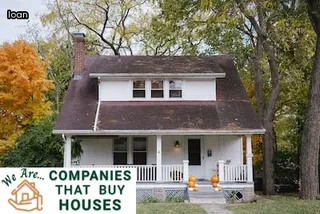
When facing foreclosure, homeowners in Minnesota should consider getting expert advice on their mortgage situation. An experienced attorney can help them protect their rights and better understand the process.
Consulting a lawyer can provide insight into the legal requirements, deadlines, and potential results of foreclosure proceedings in the state. Additionally, they may be able to connect borrowers with other resources that can help them navigate their financial situation.
For example, a lawyer may be able to recommend housing counselors who can provide personalized guidance for various types of mortgages or review loan modification options. By discussing the complexities of Minnesota's foreclosure timeline with an expert, homeowners can make informed decisions about how to move forward with their case.
Deficiency judgments in Minnesota are laws that allow lenders to seek the balance of a mortgage loan that remains unpaid after a foreclosure has occurred. When the proceeds from the foreclosure sale are not enough to cover the entire outstanding balance, lenders may file a deficiency judgment against borrowers.
This process is complex and must be handled with care, as it can have long-term financial implications for borrowers who fail to pay their remaining balance. Minnesota statute allows lenders to pursue deficiency judgments for up to six years following the date of the foreclosure, and if successful, they may be able to garnish wages or place liens on other property owned by borrowers.
Understanding this process is essential for anyone facing foreclosure in Minnesota, as it could lead to additional debt if not managed properly.

Understanding the foreclosure process in Minnesota is essential for homeowners who are at risk of losing their homes. Protecting home equity during this time is possible with careful planning and attention to detail.
Homeowners should start by familiarizing themselves with the Minnesota foreclosure timeline, which includes a series of events that must be followed step-by-step. The first step is a Notice of Default, which notifies homeowners that they have fallen behind on payments and outlines steps to reinstate the loan or face foreclosure.
Upon acceptance of the Notice of Default, homeowners have six months to cure the default and either reinstate or redeem the loan. Failing to do so results in a Notice of Sale being issued, which gives homeowners 20 days before an auction sale takes place.
If unsuccessful at auction, the home goes into Real Estate Owned (REO) status by the lender and may be sold to a third party buyer. Throughout this process, it’s important for homeowners to understand their rights in order to protect their home equity from any further loss.
An important step is consulting legal counsel prior to any action being taken, as well as understanding any assistance programs offered through government agencies or non-profit organizations that can help them keep their homes and avoid foreclosure altogether.
Understanding the foreclosure process in Minnesota can often be overwhelming, but there are financial resources available to help you. It is important to research and understand what options are available to you and the timeline of events that accompany foreclosure proceedings.
Financial assistance from organizations like your local Housing and Urban Development (HUD) office or a nearby housing authority can provide support through grants, loans, counseling services, or other programs. If you are facing a foreclosure sale, you may be able to work with your lender on a loan modification plan or find alternative sources of financing such as a home equity loan.
Additionally, if your home has already been foreclosed upon, it is essential to understand your rights as a tenant and the legal implications associated with being evicted from the property. Knowing all of these resources will help ensure that you have a strong understanding of what steps need to be taken when navigating the Minnesota foreclosure process.

Navigating rehabilitation programs for defaulted mortgages is an important step in understanding Minnesota's foreclosure process. Homeowners in financial distress can access various programs offered by the Minnesota Housing Finance Agency (MHFA) to help them avoid foreclosure.
These programs include mortgage repayment plans, loan modifications, and counseling services. Mortgage repayment plans allow homeowners to make up missed payments over a period of time and bring their loan current, while loan modifications can lower monthly payments or reduce principal balances.
Counseling services provide guidance on budgeting and managing finances, as well as connecting homeowners with other resources such as housing grants or legal assistance. Understanding these options is an important part of navigating the timeline of events for foreclosure in Minnesota, from pre-foreclosure to auction.
It is essential that homeowners understand their options before it is too late to act and take advantage of potential opportunities for recovery.
In Minnesota, the process of foreclosure typically takes between 180 to 270 days from start to finish. The timeline begins when the lender files a Notice of Default & Election to Sell with the county recorder's office.
After that, the homeowner will have between 6-9 months to cure or resolve the default or pay off the loan in full before foreclosure proceedings can begin. After that, the lender will file a Notice of Sheriff’s Sale with the county recorder and publish it in a local newspaper for 3 weeks.
Then the lender may set a date for the sheriff’s sale, which must be at least 28 days after they file the notice but no more than 91 days after they file it. Once all these steps are completed and no one redeems or purchases it on sale day, then title is transferred to the buyer and foreclosure is complete.
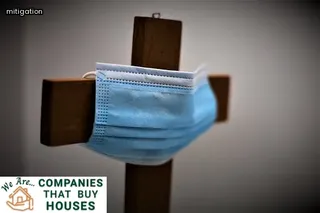
Foreclosures in Minnesota are handled by the courts, with a timeline of specific events that must occur before the foreclosure is completed. To begin the process, a lender will serve a Notice of Pendency of Foreclosure to the homeowner and record it with the county recorder's office.
The notice notifies the homeowner that they are in default on their payments, and that if payments are not made within a certain amount of time, then foreclosure proceedings will begin. If payment is not made within the prescribed period, then a Summons and Complaint is served upon the homeowner.
This document initiates legal action against them, giving them an opportunity to defend themselves in court or negotiate with their lender. Once a foreclosure judgment is entered by the court, it can take several months for them to be issued a Certificate of Sale from either their lender or an outside third party such as an investor or bank.
After this certificate has been issued, the property must be sold at public auction where anyone may bid on it; if no one bids on it at auction, then it goes back to its original lender. Following this sale, any remaining debt owed on the property will be discharged; however, if there is still money owed after sale proceeds are applied to existing debt obligations, then that responsibility falls upon the former homeowner.
In Minnesota, the statute of limitations for foreclosure is six years from the date of delinquency.
This time period is set by the state’s Statute of Limitations on Foreclosure and is intended to protect homeowners from creditors seeking to foreclose on their property.
However, this does not mean that a lender cannot try to collect on delinquent payments after six years; it simply means that they will no longer be able to use the courts to enforce a foreclosure if more than six years have passed since the delinquency.
If you are facing foreclosure in Minnesota, it is important to understand the timeline of events so you can take action before your lender has reached the point of no return.
In Minnesota, foreclosure auctions work by allowing a lender to repossess a borrower’s property if they default on their loan payments. The process begins when the lender sends a Notice of Default to the homeowner, which is followed by an auction date being set for the sale of the property.
Auctions are open to all buyers who meet certain qualifications and are typically held at either the county courthouse or online. Bidders compete against one another with offers; usually, the highest bid wins and will be accepted by the lender as payment for the loan.
Once a bidder has won at auction, they must submit the full purchase price within 10 days or risk losing their bid. After all funds have been received, title to the property is transferred to the winning bidder and foreclosure proceedings are complete.
A: The amount of time it takes for a property to foreclose in Minnesota varies depending on the individual situation, but generally the process can take anywhere from three months to two years. The duration is largely determined by how quickly lienholders respond to foreclosure notices and how quickly the court moves through the foreclosure process.
A: In Minnesota, a foreclosure typically takes about 6 months from the date of the first missed payment to the date of sale. This process can take longer depending on how quickly the mortgagee responds to requests for loss mitigation efforts.

A: The average foreclosure process in the Twin Cities area of Minneapolis can take six to nine months.
A: The amount of time it takes to complete a foreclosure in Minnesota can vary significantly depending on various factors and whether or not the homeowner appeals the decision. Generally, it can take anywhere from four to six months for the entire process to be completed if no appeal is filed. If an appeal is filed, then the timeline for completion may be extended by several months.
A: Generally, the foreclosure process in Minnesota takes up to six months to be completed when all required documents including the Promissory Note and Affidavit are filed properly.

A: The length of time for a foreclosure to take in Minnesota depends on several factors, such as the ZIP code, technology used during the process, and other tax considerations. Generally speaking, the process can take anywhere from three months to over one year.
A: The entire foreclosure process in Minnesota typically takes between 180 and 270 days, depending on county-specific timelines. This includes obtaining a Certificate of Title and paying taxes.
A: Late fees typically apply once per month and can be found online on the Minnesota Department of Commerce website.
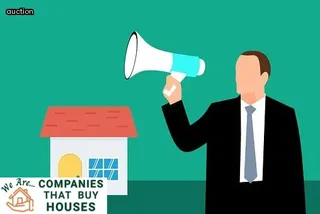
A: According to data collected by the Consumer Financial Protection Bureau (CFPB), the average foreclosure timeline in Minnesota is approximately 7 months. However, depending on whether or not a forbearance has been granted, this timeline can be extended by several months.
A: The length of time it takes to complete a foreclosure in Minnesota will depend on the specifics of each case. However, if consent is given by the client and an auto-dialer is used to establish an attorney-client relationship, the process may take up to six months.